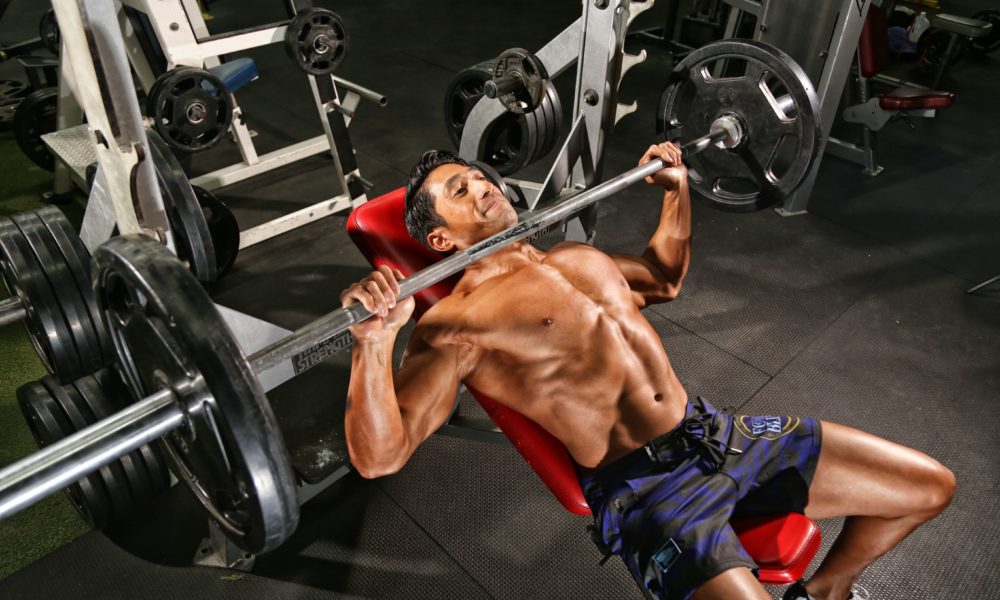

Are you looking for a simple yet effective workout to build muscle and strength?
There’s no better starting point than a solid bench press. The bench press is the most popular and widely used exercise globally, targeting your chest, shoulders, and triceps.
It is performed with a dumbbell or a barbell, which can be loaded with plates to decrease or increase weight. There are numerous variations of bench presses that you can do either with dumbbells or a barbell to build your upper body.
This article will give you an overview of the chest anatomy that you should be familiar with to get the most out of your benching and outline some of the most popular bench press types and how you can perform them correctly to get the best out of them.
Chest Anatomy
The chest is an area of the body that can be trained for size and strength. The pectoralis major is the strongest and largest muscle that makes up your chest’s bulk. The pec major is divided into the sternal head (lower) and the clavicular head (upper).
The sternal head originates at the sternum, while the clavicular head originates at the clavicle and attaches to the upper arm’s sternum and humerus bone.
This anatomical difference allows you to move your arms in three different planes of motion: across your body, chest, and side (transverse flexion). Through these movements, the pectoral muscles allow you to lift objects off the ground, pull yourself up from a seated or lying position, or throw something from your chest.
Another part of the chest that gets trained is the pec minor. It is a smaller muscle underneath the pec major. It originates in the ribs and attaches to the scapula (shoulder blade) and humerus bone in the upper arm.
This small muscle helps pull the shoulder blades together during lifting, assists with flexing at the elbows, and helps rotate your upper arm during pulling motions like bench press or lat pulldowns.
The clavicular head is responsible for flexing the humerus—or arm bone—across your body like when you bench press with dumbbells or a barbell in an incline position. The sternal head is responsible for extending the humerus over your body, like when you perform dumbbell flyes or cable crossovers.
Now that you understand your chest anatomy, let’s see why doing a bench press is essential.
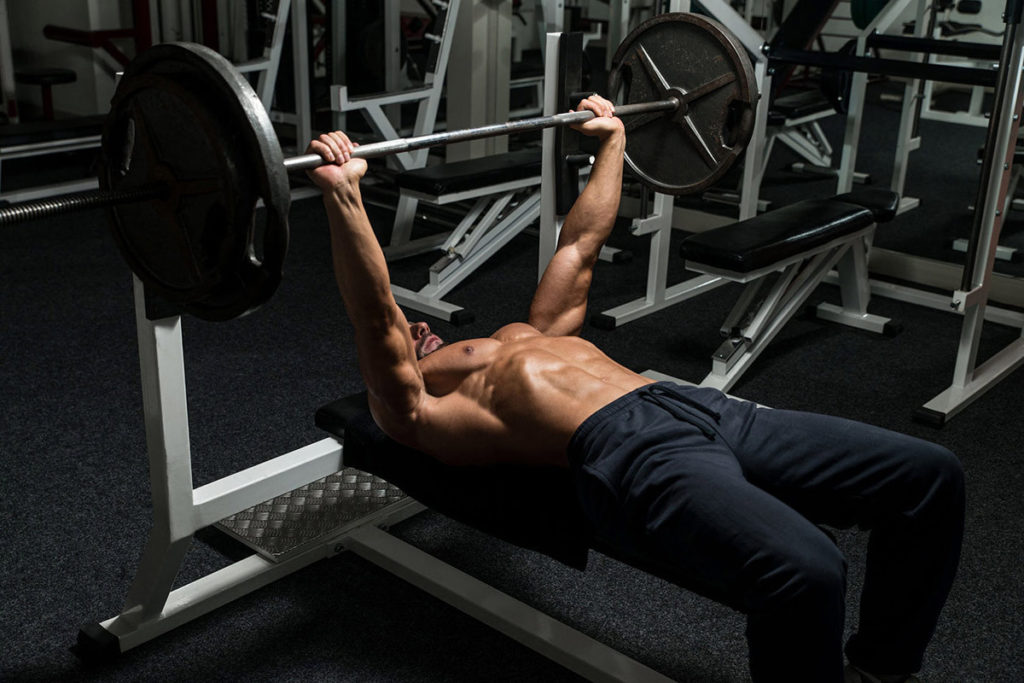
Why Bench Press is Important
Here are some reasons why bench pressing is essential:
- It’s an effective way to build your upper body.
- Strengthening exercises improves performance in sports such as football, basketball, track and field, etc.
- Improves muscular endurance.
- You will see more tone in your upper body.
- Helps stimulate muscle growth and increases muscle mass in your chest, shoulders, and arms.
Different Variations of Bench Press Based Exercises
There are many different variations of bench presses based on the equipment you use, the position of your body, and more. Some variations are:
1. Dumbbell Bench Press
The dumbbell bench press is a variation of the standard barbell bench press. The use of dumbbells allows you to have a greater range of motion because each arm works independently.
The dumbbell bench press is a very effective exercise for adding strength and muscle mass to the pectorals chest muscles and building shoulders and triceps. It uses multiple muscle groups, allowing you to lift more weight than an isolation move (an exercise that targets one particular muscle group).
How to Perform a Dumbbell Bench Press
Lie back on a flat bench with a dumbbell in each hand at shoulder level and your palms facing your thighs. Then, using your thighs to help propel the dumbbells up, lift the weights over your chest to prepare for the first rep. Inhale as you slowly lower back down. Exhale as you push them up and pause when they meet at the top. That’s how to perform a rep.
2. Barbell Bench Press
The barbell bench press is a weightlifting exercise that targets your chest done using a barbell on a workout bench. Even though the chest muscles are the primary focus of this exercise, your front deltoids and triceps also work as supporting muscle groups.
Both men and women can use it extensively in bodybuilding and athletics for training to develop the chest muscles. Performing this exercise will improve your strength and power.
How to To Do Barbell Bench Press
Lie face-up on the bench. Your back should be flat on the bench. Hold the barbell with an overhand grip, your hands slightly wider than shoulder-width apart. Lift the barbell off the rack and hold it straight over your chest with your arms extended. Slowly lower the barbell to your chest, then push it back up to the starting position to complete one rep.
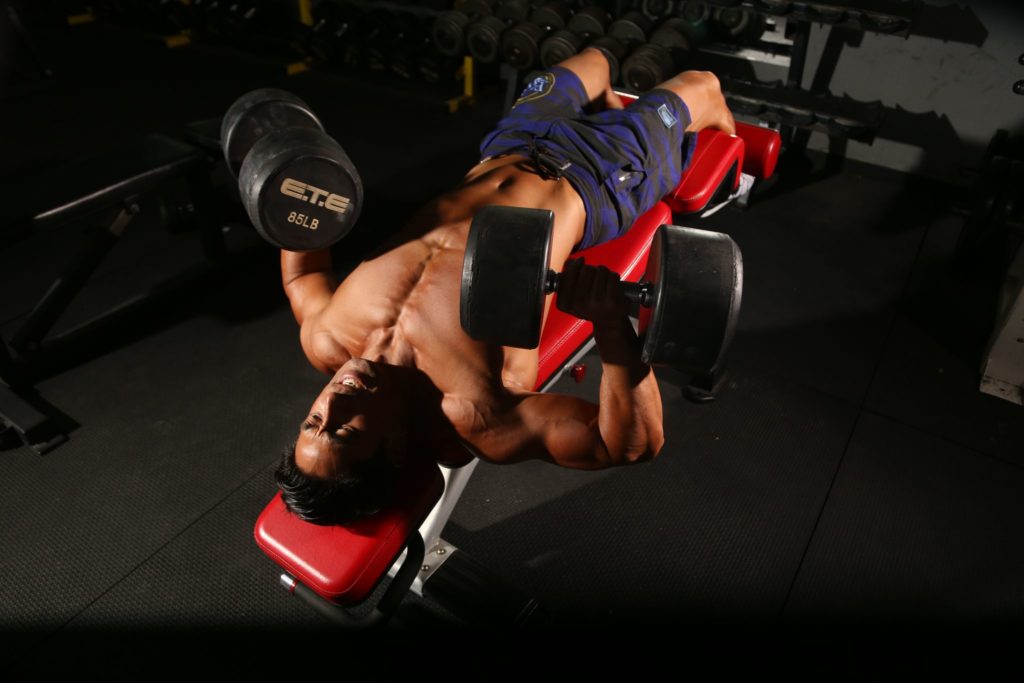
The Difference Between Dumbbell and Barbell Bench Press
You can do a bench press with dumbbells or a barbell press. Because each weight uniquely engages your muscles, it’s critical to understand the differences. The table below shows the differences between dumbbells and barbell presses.
Dumbbells bench press Barbell Bench press
Dumbbells allow for a more extensive range of motion, as your hands are free to move through a greater distance. Barbells allow you to lift more weight as muscles don't need to stabilize to keep the weight balanced.
Dumbbells allow you to move freely in the bench press. This movement can help you work different muscles in your chest, triceps and shoulders. The barbell produces more significant activity in the triceps only because it lacks a broader range of motion.
Great for developing the pectoral and biceps muscles. It is excellent for building strength and muscle mass.
Dumbbells require additional stabilizing muscles and the ability to control each arm. You don't need additional stabilizing muscles to keep the weight balanced
Dumbbells are more versatile and can be used in more comprehensive positions. Barbells are limited to the number of positions you can use.
3. Decline Bench Press
The Decline Bench Press is an excellent alternative to the standard bench press. It primarily works the lower pectorals chest muscles, lateral deltoid, and front deltoids and requires involvement from the triceps and the core. You can do it using dumbbells or barbells, making it a decline dumbbell bench press or decline barbell bench press.
The decline bench requires you to set the bar to a 15-30 degrees angle on a decline. This way, your upper body will be at the bottom and your lower body at the top, activating the lower pectoral muscles as you work harder to push the weight away from your body.
How to do Decline Bench Press
Start by lying down on a 30-degree decline bench facing up, holding the barbell shoulder-width apart over your chest, palms facing forward, and extending your arms straight up from the shoulders.
Inhale and carefully lower the weight until it touches your mid-chest, keeping your elbows 45 degrees from your body. Don’t let your elbows flare out or brush against your rib cage during the movement. Pause, exhale, and lift the barbell to the starting position, locking your elbows.
Decline bench presses suit everyone who wants to build their lower chest. If you’re new to working out, learn how to perform flat and incline bench presses before adding declined movements.
4. Inclined Bench Press
Incline bench presses are a variation of the standard bench press. However, instead of lying horizontally, your torso is positioned at an incline (the upper body is on the upward slope). The incline bench angle is about 15 – 30 degrees in this exercise variation but can be higher or lower depending on your body and muscle goals.
The incline emphasizes the upper portion of the pectoralis major muscle, anterior deltoid (front shoulders), and triceps Brachii. The higher the incline angle, the more you’ll be targeting your chest rather than your shoulders and triceps.
How to Do Incline Bench Presses
You can do an inclined bench press using dumbbells or barbells.
Start by setting up your bench to an angle of 30 Degrees. Lie on an incline bench at 15 to 30 degrees with your feet firmly planted flat on the floor.
Grab a barbell with hands slightly more than shoulder-width apart (your hands should be overhanging your elbows). Push it off the rack while keeping it close to your body.
Carefully lower the barbell until it touches your chest below your neckline, and squeeze your chest muscles hard as you push the barbell back up without completely locking out your elbows.
The incline bench press is best for those who want to develop bigger upper pecs or have problems with their shoulders due to the angle of their arms about their body when performing a flat bench press.
5. Dumbbell Floor Press
The dumbbell floor press is a variation of the incline bench press, which is a variation of the standard bench press. It’s an exercise for major and minor pectoralis, triceps brachii, and anterior deltoid – all essential muscles in pushing and pressing movements.
It is primarily used to develop strength and size in the chest while reducing stress on your shoulders and elbows.
It can be easily modified by changing the dumbbell width apart and using different grips (neutral, supinated, pronounced). The floor press allows you to safely train a heavy pressing movement without putting your shoulders at risk of injury.
The dumbbell floor press also allows you to work your muscles without needing any equipment other than a set of dumbbells and a flat surface to lie on. This makes it an ideal exercise if you’re limited to bodyweight training or have no access to a gym.
How to Do Dumbbell Floor Press
Start by lying flat on your back on the floor. Hold a dumbbell in your left hand with your palm facing your body. Lift the dumbbell up and above your body until it is directly above your shoulder. Slowly lower the dumbbell down until it is just above the floor. Push the dumbbell back up to starting position and repeat this movement
Bench Press Tips
The bench press is a great way to build chest and upper body strength. However, improper form can lead to serious injury. Here are some tips for bench pressing safely:
- Grip the bar at shoulder width with your thumbs wrapped around the bar.
- Keep your feet flat on the floor and drive through your heels
- Exhale as you press the bar from your chest and lockout at the top of the motion.
- Inhale as you lower the bar back down to your chest and pause at the bottom before pressing again.
- Keep your elbows at 45-degree angles to your sides throughout the movement, which will keep them in a safer position than if they were flared out.
- Start with a lighter weight to get used to the movement and find your groove before moving on to heavier weights.
- Maintain an arch in your lower back by tightening your glutes and abs throughout the movement, then flattening out your back when you reach the top of the lift while maintaining tension in those muscles.
- Start with a spotter or a partner who can help you control the weight by lifting it up and down.
Frequently Asked Questions
Below are the most frequently asked questions by people.
Is Decline Bench Press Necessary?
If you truly want a comprehensive chest workout that will allow you to hit every part of your chest, incorporate a decline bench press into your routine. The decline bench press is so effective as it can hit the lower portion of your chest, something that the flat and incline bench presses don’t allow you to shoot.
What is the Right Decline Bench Angle?
The right decline bench angle varies according to your fitness level. Beginners should start at a 15- to 30-degree curve and progress to greater angles as they become stronger. For example, do 15-degree bench presses for the first week, then increase the angle by 5 degrees each week until you reach 30 degrees.
Is Incline Press Necessary?
An incline bench press is necessary for people who want to give their upper pecs more emphasis to build a complete, round chest. If you’re only benching flat or decline, you’re missing out on the upper portion of your chest, leading to a flat, saggy look.
What is the Recommended Incline Bench Angle?
The recommended incline bench angle is between 30 and 45 degrees, the most effective range for building muscle and strength in the upper chest. It allows you to press your chest muscles in line with the barbell and gives your shoulders a break from taking on the brunt of the weight.
Bottom Line
The bench press is a classic upper body exercise targeting your chest, shoulders, and triceps. It can be done at home or in a gym.
The bench press can be performed with dumbbells or a barbell, but dumbbells allow for a greater range of motion, which may help decrease your risk of injury. However, before you start pressing, consider safety first. We’ve provided some simple tips to help you on your journey towards ultimate fitness if you’re starting.
So what are you waiting for? Let’s get benching!






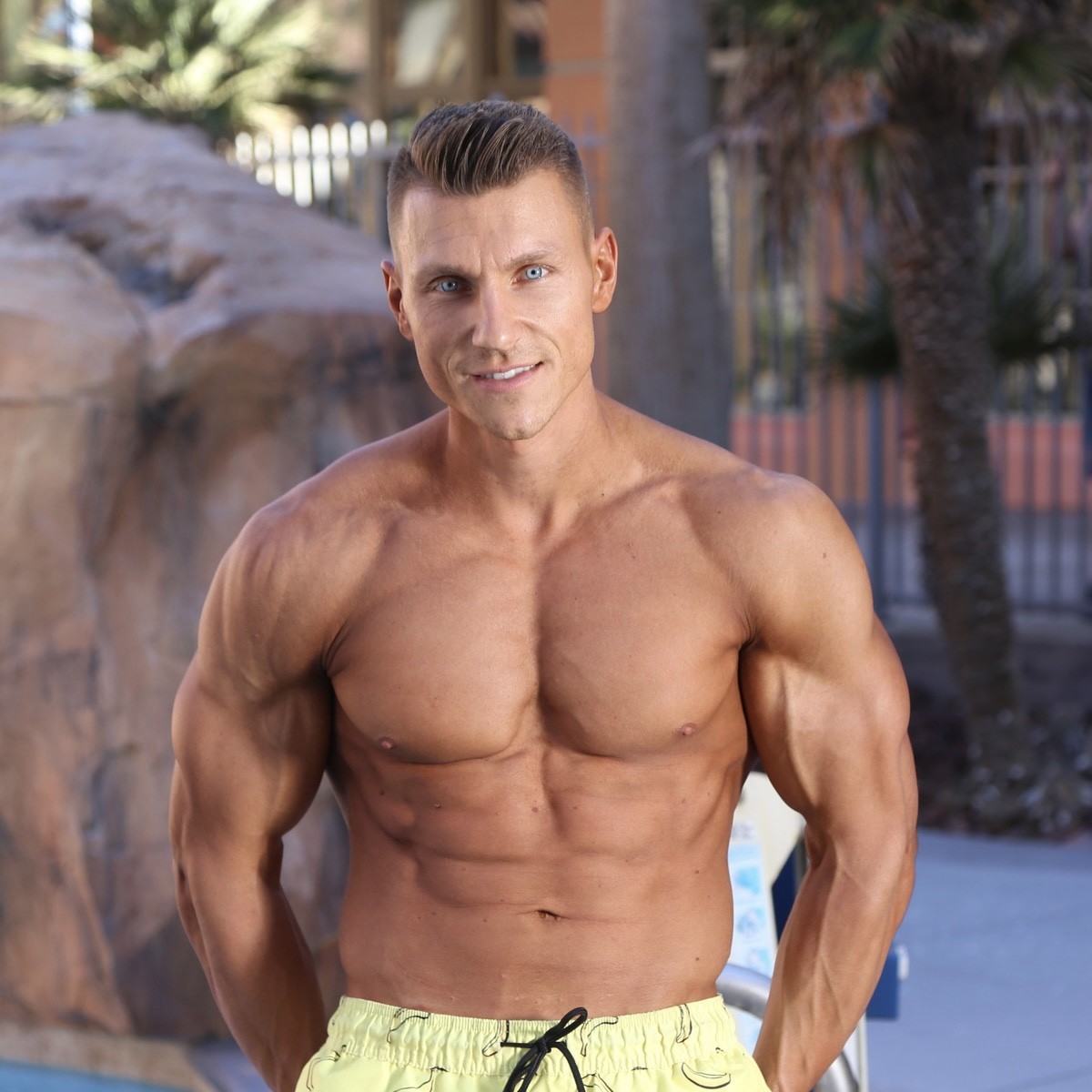
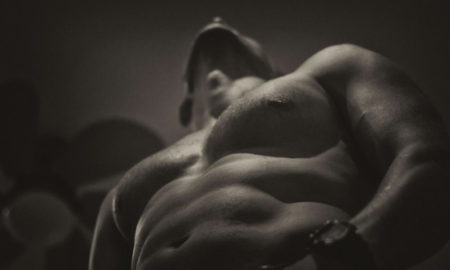














You must be logged in to post a comment Login